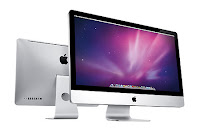1. Tremulous
Tremulous is a free, open source game that blends a team based FPS with elements of an RTS. Players can choose from 2 unique races, aliens and humans. Players on both teams are able to build working structures in-game like an RTS. These structures provide many functions, the most important being spawning. The designated builders must ensure there are spawn structures or other players will not be able to rejoin the game after death. Other structures provide automated base defense (to some degree), healing functions and much more...
Popular Posts
-
The 4th generation iMac, alongside the Macbook Pro is Apple’s first computer to feature Intel Processors, as Apple plans to transition all e...
-
Here is a compilation of the coolest and most creative and innovative iMac desk setups. You can see all these iMac desk setups and much more...
-
Apple has announced that the Worldwide Developers Conference (WWDC) will take place from the 6th - 10th June 2011 at the Moscone West conv...
-
iWeb is a great website publishing tool for Mac users. With iWeb you can build a website with ease and without having to learn any HTML cod...
-
Over the past few years, Apple and Steve Jobs have planned a special training program that will teach the companies executives to think lik...
-
During Apple’s transition from PowerPC to Intel Processors, the aesthetic design of Mac computers have also begun to transition from white p...
-
1. Tremulous Tremulous is a free, open source game that blends a team based FPS with elements of an RTS. Players can choose from 2 unique r...
-
Apple has released it’s first commercial for the all new iPad 2. Titled “We Believe”. “ This is what we believe. Technology alone is not ...
-
The iMac is nearly due for an update. The next update is most likely to feature Intel's new "Sandy Bridge" processor lineup. T...
-
The release date is nearing for Mac OS X 10.7 Lion and there are many obvious indications that Apple's next generation operating system ...






















